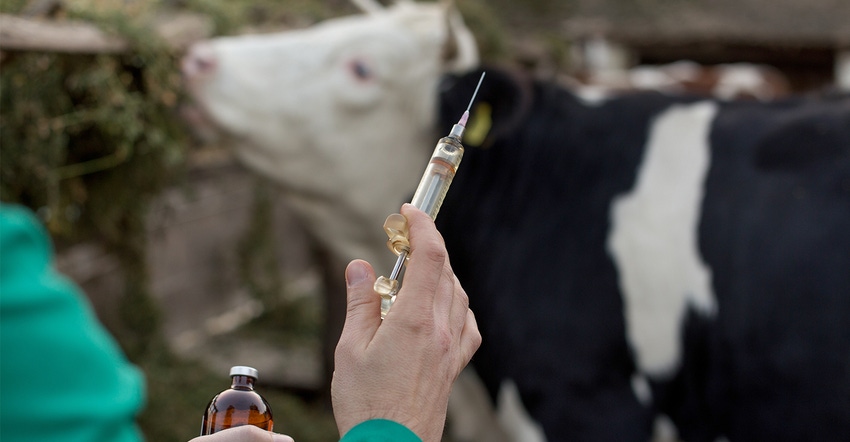September 8, 2017

By Rhonda McCurry
A herd health management plan is vital to profitable meat production. Some producers, however, do not vaccinate until they experience a loss. The investment in disease prevention is less than the cost of disease treatment. And I think we all learn this the hard way.
When it’s time to treat our livestock for simple, routine vaccinations, I’ll be the first to admit that I think it can be put off. My mind says, “These pigs haven’t gone anywhere else since we picked them up from the breeder, so surely they can wait to be wormed.”
Then it happens. The best animal in the barn stops eating. We add enticing ingredients and baby the pig or goat until it becomes more important than our own mealtime. Next it hits me: “We didn’t worm them, did we?” This lack of scheduling and routine on my part comes down to several days of no gain for our show animals. It might also mean they learned bad eating habits. The long-term affect is that there are worms in the pigs’ intestines, and now I need to treat for more than basic Safeguard worming treatments. And I learn the vaccination lesson once again.
Simply put, don’t wait until a disease outbreak occurs before implementing a sound herd health program. For cattle to reach their performance potential, they must be healthy.
Many animal health problems can be controlled with good management, proper nutrition and vaccination against infectious diseases. Beef cattle vaccination programs vary, depending upon the type of operation and area of your state. A basic herd health vaccination program is of primary importance. And remember it is important to contact your veterinarian to determine if additional vaccinations are required for your area.
Here is a list of who needs what and when. I’m sure it can be expanded and other species included, but this is what I learned from my local veterinarians and my dad, who was a large-animal vet for 32 years.
Calves
Recommended preweaning vaccines are blackleg 7-way, IBR-BVD-PI3, letospirosis and brucellosis. Optional vaccination against bovine respiratory syncytial virus, pasturella and pinkeye can be administered if needed. Cows should get an E. coli vaccine twice in the 30 days before calving. Anthrax and anaplasmosis vaccines are optional.
Piglets
Circovirus, mycoplasma and porcine reproductive and respiratory syndrome vaccines are recommended at weaning. Erysipelas is optional but should not be given before 6 weeks of age. Influenza vaccine is recommended at 7 to 8 weeks followed by a booster a month later.
The best time to vaccinate small pigs is around weaning time, as they are used to being individually handled. However, some breeders and owners prefer to spread out the stress that comes from weaning and vaccinations, and choose to vaccinate a few days after the pig has been weaned. For pigs weaned at older ages, it may be necessary to vaccinate prior to weaning. Combination vaccinations are a good choice for show pigs, as they eliminate the need for multiple injections, reducing stress and the possibility of swelling or injection-site lesions on the pig.
Sows
Lepto, parvovirus, erysipelas, E. coli and rotavirus should be given pre-farrowing. Influenza vaccine is recommended twice a year and PRRS should be given prior to breeding. Porcine epidemic diarrhea vaccine is optional.
Meat goats
Vaccinations for enterotoxemia and tetanus are recommended for pregnant does. Does should also get a clostridial CDT during the fourth month of pregnancy. Kids should be vaccinated for enterotoxemia and tetanus. Bucks should get a dose of clostridial CDT once a year, two doses of pneumonia vaccine two to four weeks apart and leptospirosis vaccine if your veterinarian recommends it for your region.
Ewe lambs
Vaccinations for campylobacter and Clostridium perfringens are recommended three weeks prior to breeding. Parainfluenza vaccine should be given three weeks prior to lambing. Foot rot, Caseous lymphadenitis and rabies vaccines are optional.
Preventing diseases through the use of a herd health management plan saves time and money. Vaccination programs should always be customized for your operation. It’s always best to work with your local veterinarian, someone trained in local diseases and who understands the weather pattern, climate, pest and infection issues in your area.
Justifying the cost of preventive management is sometimes difficult, but the experience of a health disaster certainly drives home the point that an ounce of prevention is worth a pound of cure.
You May Also Like




